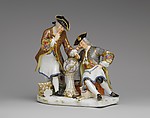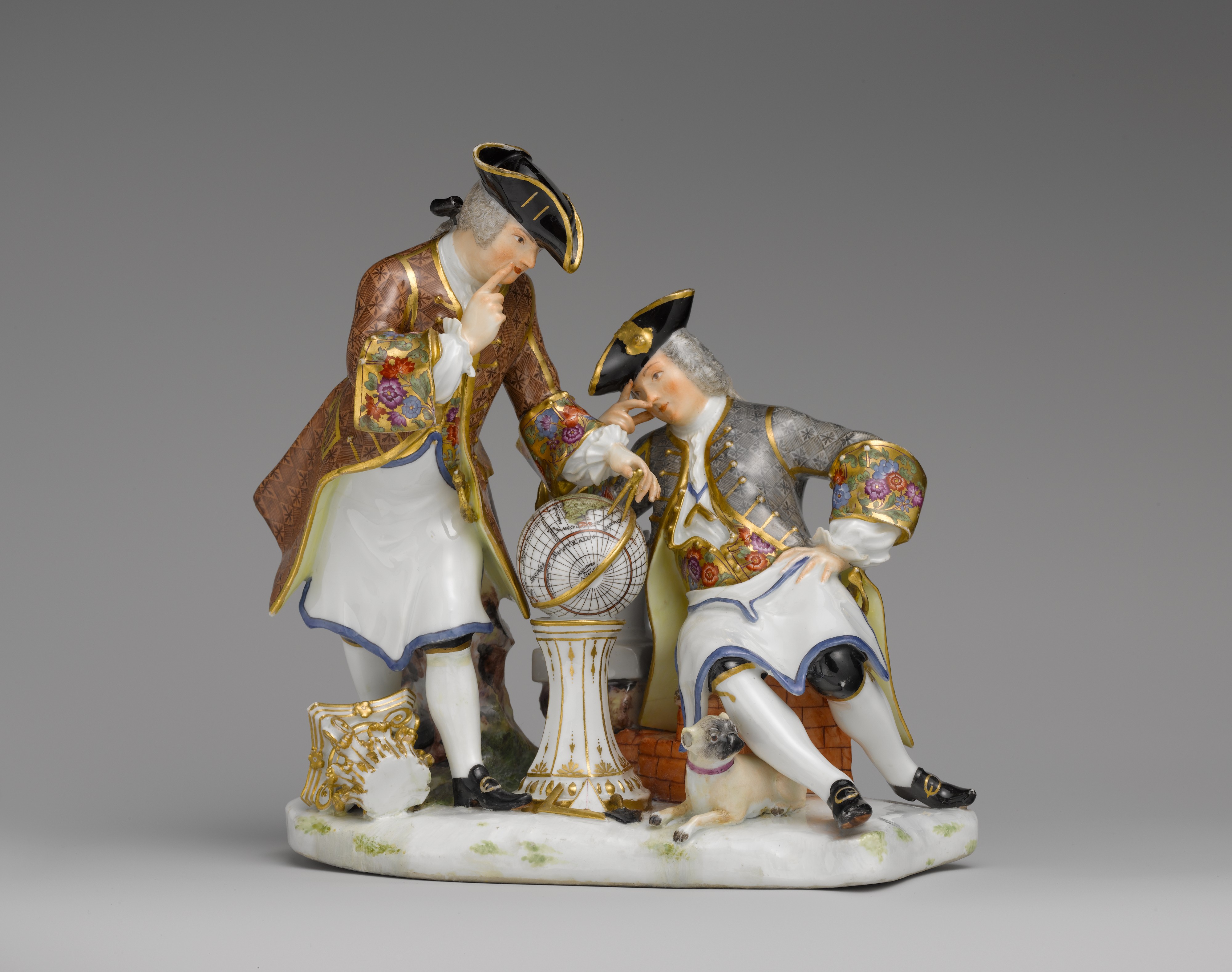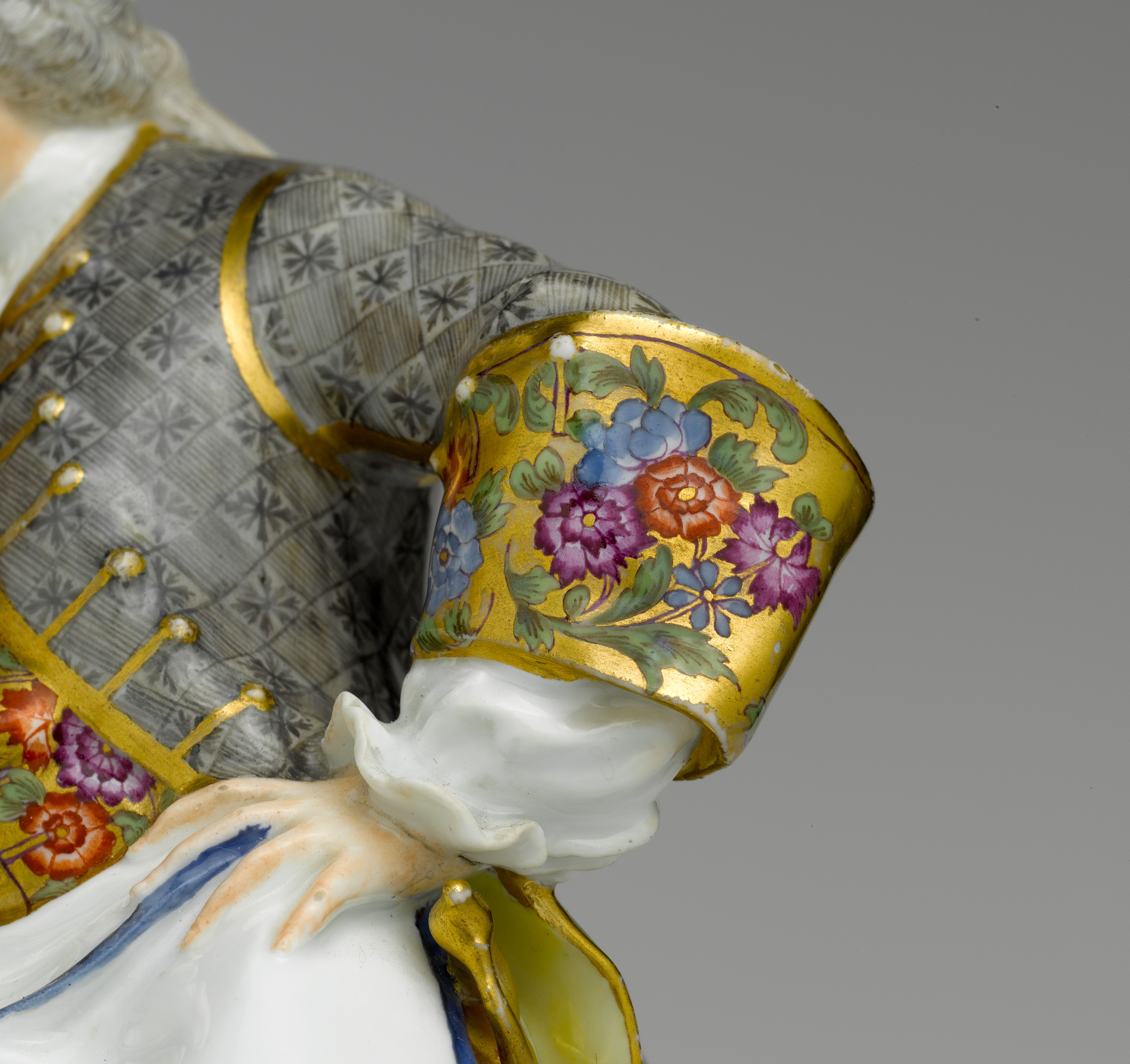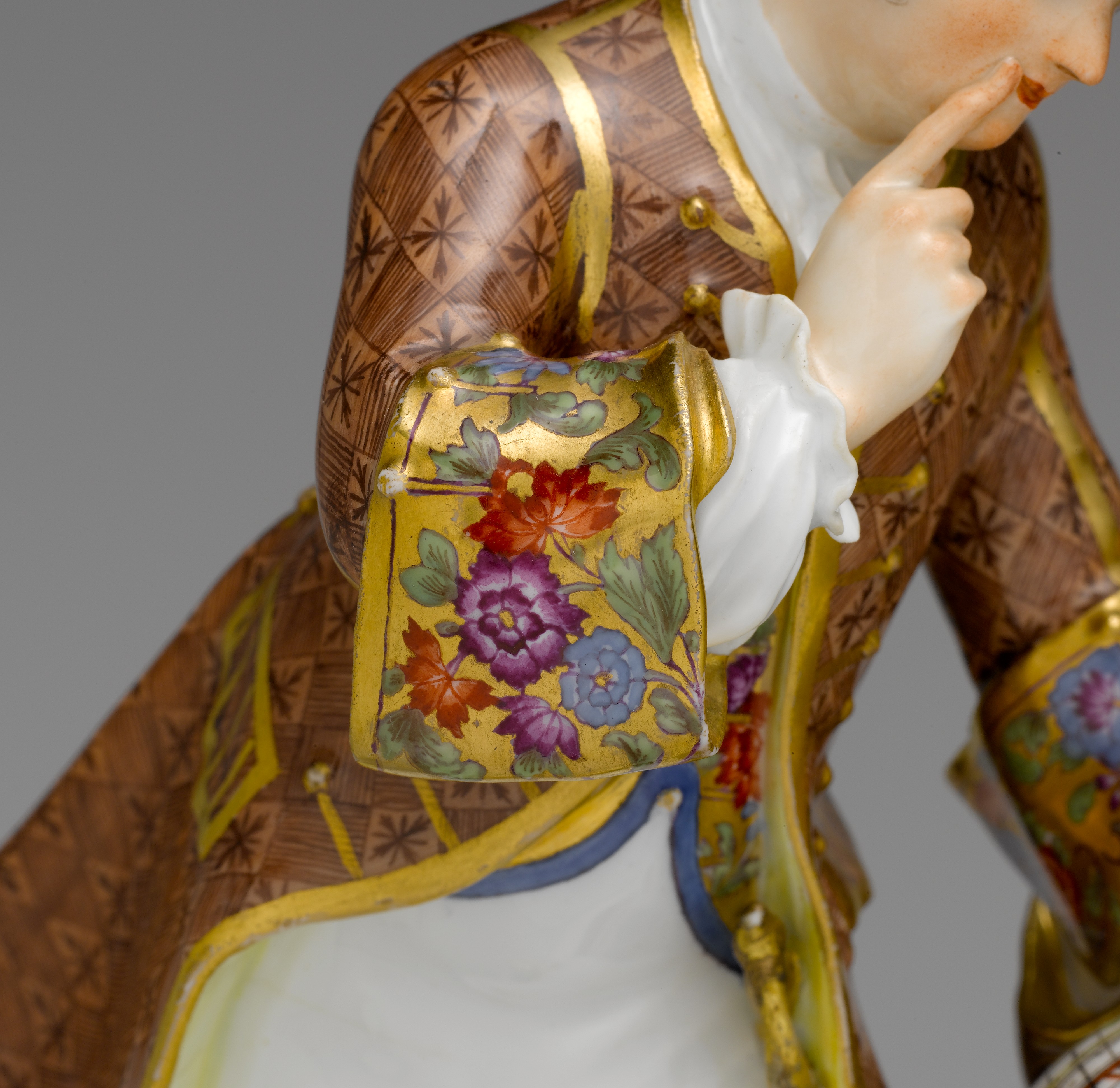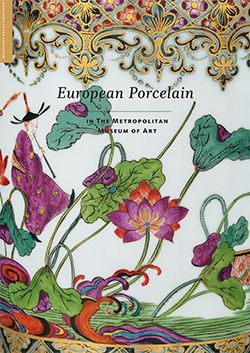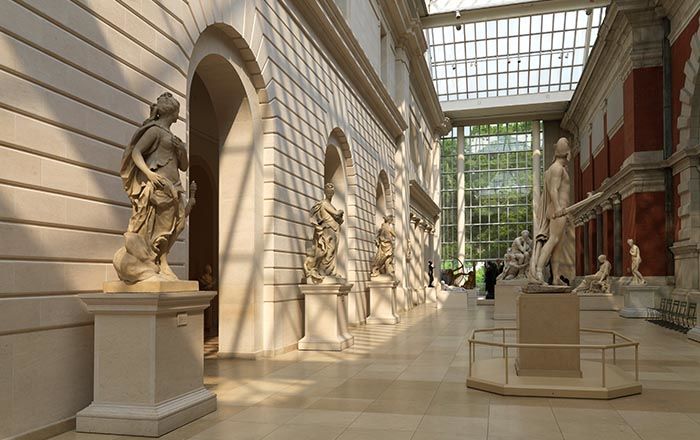Two Freemasons
Manufactory Meissen Manufactory German
Modeler Johann Joachim Kändler German
Not on view
At the same time the Meissen factory was producing figures depicting characters from the commedia dell’arte (see 1982.60.309), it was also creating figures that portrayed men and women from the upper strata of society engaged in a variety of activities. The majority of works from this latter category depict a man and a woman in some sort of leisure pursuit, most of which have a decidedly amorous undercurrent. However, this figure group of Two Freemasons stands somewhat apart from many of the figures modeled in the mid-1740s with its representation of members of a fraternal organization, a marked contrast to those figure groups that portray fashionably dressed figures engaged in a daily activity, such as taking tea or writing a letter.
Freemasons achieved considerable prominence and influence during the eighteenth century, and what had originated as a guild for the Masonic Order evolved into a fraternity that accepted non-Masons who embraced its values. The rise of Freemasonry coincided with the growth of the Enlightenment, and while Freemasonry resists simple and succinct explanations, it is rooted in the belief in the existence of a god, in the value of self-knowledge, and in the importance of virtuous and charitable behavior to one’s fellow man. A certain degree of mystery surrounded the Freemasons in the eighteenth century, in part due to the initiation ceremony required for its new members, and for the various rituals and symbols associated with the Masonic Order. In 1738 Freemasonry was banned by Pope Clement XII (pontiff 1730–40) as a threat to the Catholic Church,[1] but it is not clear how significantly this condemnation affected the status of Freemasons in Germany. Frederick Augustus Rutowski (1702–1764), Count Rutowski, the illegitimate son of August II (1670–1733), commonly known as Augustus the Strong, elector of Saxony, king of Poland, opened a fraternal lodge in Dresden in 1738; during that same year a Freemason Lodge was established in Berlin, which became a Freemason Grand Lodge in 1744 with the support of Frederick II (1712–1786), Frederick the Great.
This model of the Two Freemasons dates to 1744, the moment at which Freemasonry was beginning to flourish throughout the Continent and Britain. While the group was modeled by Johann Joachim Kändler (German, 1706–1775), it appears to be the reworking of a group of two Freemasons created in 1742 by another Meissen modeler, Johann Friedrich Eberlein (German, 1695–1749).[2] Evidently, the original molds had become too worn, necessitating the refashioning of the model.[3] Kändler undertook this work in 1744,[4] although it is not clear how extensively he changed Eberlein’s original composition. In this model, Kändler has made explicit the identity of the two figures as Freemasons. Both men wear the symbolic white aprons that were required of every Freemason when inside a Lodge. The standing figure holds one finger to his lips, signaling the need for discretion by all Freemasons, which is acknowledged with a hand gesture from the seated figure. The compass held by the standing figure is one of the primary emblems of Freemasonry, symbolizing the need for proper proportions as a requisite for architectural beauty, which embodies the Order’s principles. At the base of the pedestal that supports the globe is a square edge, a plumb bob, and a trowel, all of which refer to the work of a Mason, including the capital lying on the ground and the column behind the two figures. The seated figure wears a square edge from a ribbon around his neck, perhaps indicating his rank as a Master, and the pug resting at his feet was commonly interpreted as a Masonic symbol by the mid- eighteenth century.[5] The compositional focus on the globe has been interpreted as symbolizing the Freemasons’ philosophical embrace of the Enlightenment, which they furthered through their humanitarian values.[6]
Freemasonry in Germany attracted members from both the royalty and the aristocracy, and the luxurious clothing worn by the two figures in this group suggests their elevated social standing. The jackets worn by the two men, one gray and the other a rust color, are decorated with a diaper pattern of similar design, which might have been made of silk or cut velvet. Their jackets are trimmed in gold along the pockets, seams, buttonholes, and outer edges, and the prominent cuffs and waistcoats are painted to resemble costly fabrics of the period made of silk and metallic thread.[7] Both the cut of the jackets and the fabrics that the decoration evokes are typical of what would have been worn by members of fashionable society in the mid-eighteenth century, and their hats and wigs also depict styles current at the time.[8]
Kändler created other figures of Freemasons (see 64.101.50), most of whom are also dressed in a similarly luxurious manner, suggesting that Freemasonry was commonly associated with elevated social rank in Germany in the 1740s. It is possible that the Freemason figures modeled by Kändler reflected their intended clients and audience; the circles in which Freemasons moved would have immediately recognized all of the symbolism, and the depiction of Freemasons in the fashionable and expensive medium of porcelain may have been seen as affirmation of the status of this emerging fraternal order.
Footnotes
(For key to shortened references see bibliography in Munger, European Porcelain in the Metropolitan Museum of Art. NY: The Metropolitan Museum of Art, 2018)
1 For information about Freemasonry in Europe in the eighteenth century, see Curl 1991, pp. 114–18.
2 I. Menzhausen 1993, p. 112.
3 Möller 2006, p. 94.
4 Rückert 1966, p. 168, no. 872.
5 The significance of the pug in regard to Freemasonry has been interpreted by James Stevens Curl in a number of ways. The dog, valued for its fidelity, was adopted as the symbol of a society founded in 1740 that had many parallels to the Freemasons but admitted both men and women. Curl 1991, pp. 76–77; see also Macoy 1989, p. 252.
6 Ulrich Pietsch in Pietsch, Loesch, and Ströber 2006, p. 125
7 For a very similar gold- ground floral fabric, see the portrait of Gerard Cornelis van Riebeeck by Mattheus Verheyden in the Rijksmuseum, Amsterdam (SK- A- 816). The portrait was executed ten years after the figure group, but the fabric is remarkably similar in design. I thank my colleague Melinda Watt, Curator, Department of European Sculpture and Decorative Arts, The Metropolitan Museum of Art, New York, for drawing my attention to this portrait.
8 I thank Melinda Watt for her observations regarding the men’s costumes and wigs.
This image cannot be enlarged, viewed at full screen, or downloaded.
This artwork is meant to be viewed from right to left. Scroll left to view more.
